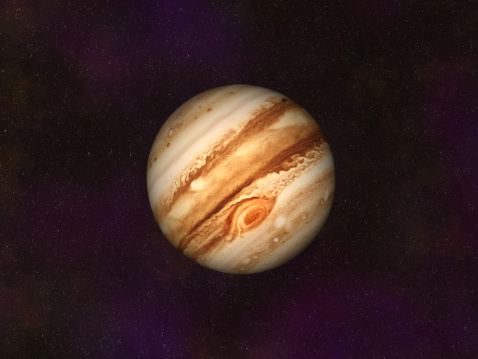Jupiter is the largest planet in the Solar system.
It is the fifth planet from the Sun.
It has many moons.
It has two rings.
The Romans named the planet after Jupiter, the king of their gods.
The Great Red Spot is a raging storm on the planet. Getty Images
At least seventy nine moons orbit Jupiter!
The four largest moons are Io, Europa, Ganymede and Callisto. They were observed as long ago as 1610, by the astronomer Galileo.
Jupiter probably has a molten core of rocky material surrounded by gases and liquid. It is one of the four planets in the solar system known as 'gas giants', the others are Neptune, Saturn and Uranus.
Thick clouds of poisonous gases cover the planet, and raging storms and hurricanes are on the surface. The brown spot is known as The Great Red Spot and is the largest hurricane in the solar system. It has been raging for years.
There are two dust rings around Jupiter, one inside the other. But they can't be seen from Earth. They were discoved in 1979 by the Voyager 1 spacecraft.
Exploring Jupiter
Jupiter has been explored by robotic spacecraft.
NASA’s Juno spacecraft launched in 2011. On July 4, 2016, Juno arrived at Jupiter. It did not land. It is flying around, or orbiting, Jupiter. Juno is taking the first pictures of Jupiter’s north and south poles. It will study the planet in detail as it orbits.
It’s a good idea to get information from more than one source!
Read more about Jupiter
https://www.nasa.gov/audience/forstudents/k-4/stories/nasa-knows/what-is-jupiter-k4.html
https://www.ducksters.com/science/jupiter.php



